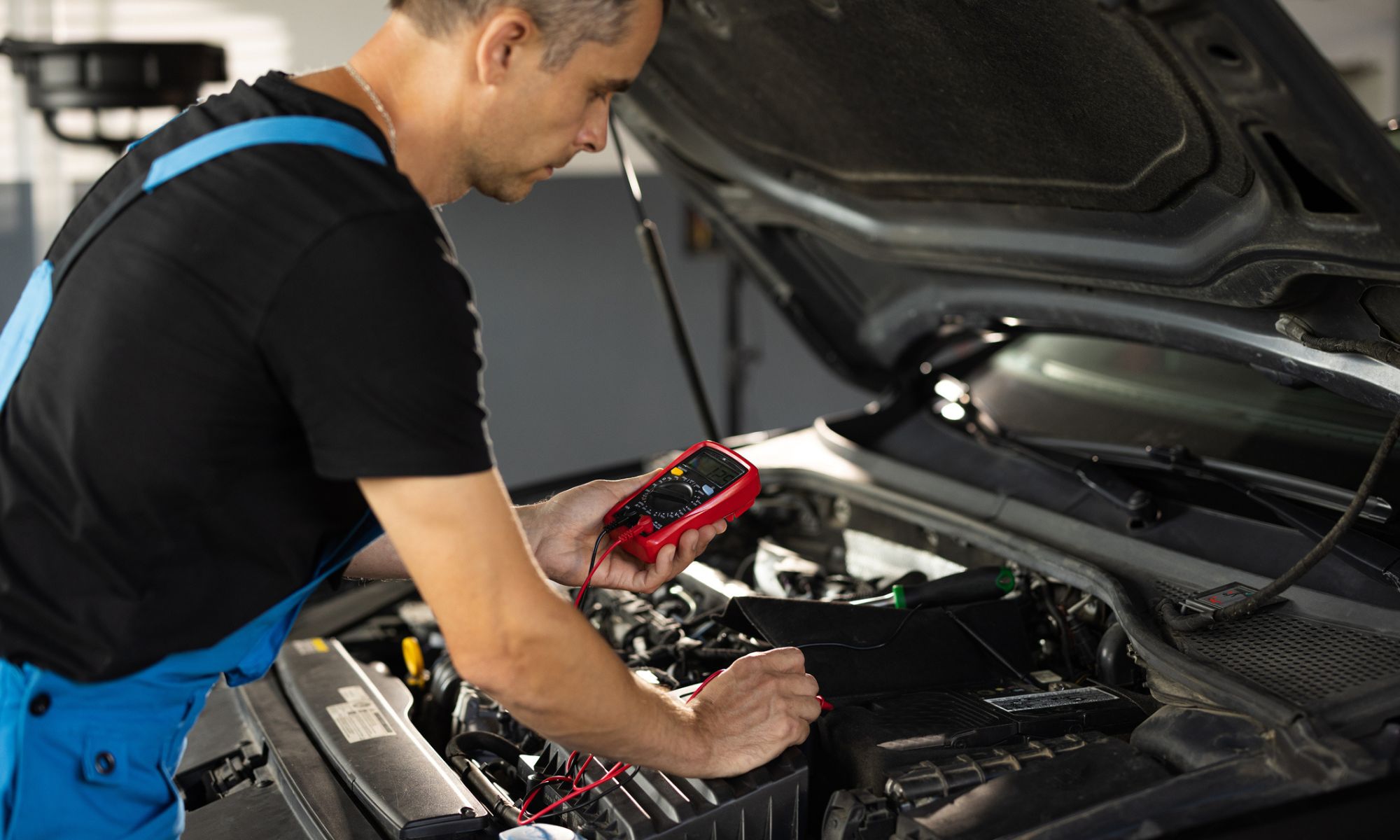Get this deal! Call now.
Speak with a vehicle protection plan specialist and get $300 off any new contract instantly.
Call 866-678-4172
The check engine light is never a welcomed sight when it appears on your dashboard. The dashboard warning light is often the cause of added stress and confusion because expensive car repairs may be in your future. However, you probably don’t need to panic yet.
If your check engine light turns on, it doesn’t mean the engine is failing. A check engine light can mean something minor, as your gas cap needs to be tightened. Unless the check engine light blinks, you’ll likely reach your destination without a call to roadside assistance. Don’t wait too long.
How long is it safe to drive with the check engine light? We’ll answer your questions and let you know common causes for a check engine light.
It is always a good idea to pay attention to the warning lights on your vehicle dashboard. When your check engine light comes on, you can continue to use your vehicle as usual. However, you should scan for the diagnostic trouble code (DTC) within the next 50 to 100 miles. If your car has a minor problem, it may still be able to operate as usual. However, this can put unnecessary stress on other components, waste fuel, or prevent your vehicle from performing at its best.
If you can’t scan for your trouble code right away, there are other ways to help you determine the severity of the issue. Dashboard warning lights can appear in a few different ways, giving you a better indication of what to do:
Solid Yellow/Orange: If your check engine light is solid yellow or orange, something needs your attention soon. However, it isn’t likely an emergency, but scan with a code reader soon to prevent further damage.
Solid Red: If your check engine light is red, this could indicate something more severe or a dangerous safety concern that requires immediate attention. You should drive the vehicle to the nearest auto repair shop.
Blinking: If your check engine light is blinking, pull over and turn off the engine. You should then contact roadside assistance or your warranty provider for help. A check engine light flashing can indicate that your engine is misfiring, and continuing to drive it can result in catastrophic failure.
Dashboard warning lights are a part of your vehicle’s onboard diagnostic system (OBD), an intricate network of sensors that monitor and regulate each vehicle component. Suppose a system or component falls outside the normal range of operation. In that case, your vehicle’s computer system will receive a five-digit diagnostic trouble code for you or a mechanic to find later.
The check engine light is often the first sign that something is wrong with your engine or emissions system. However, it can mean anything from a loose gas cap to more expensive engine repairs. You can better understand the problem using an OBD-II scanner to retrieve the trouble code from your vehicle’s onboard computer system. Alternatively, a repair shop or dealer can diagnose and repair the part to get you back on the road sooner.
To help you better understand what could be the issue, here are a few of the most common reasons for a check engine light:
A loose, faulty, or missing gas cap can result in a diagnostic trouble code (DCT) P0457, activating the check engine light. Although it doesn’t seem like a big deal, your fuel filler cap creates a reliable seal for your fuel system, helping it maintain optimal pressure and preventing dirt and debris from getting into your fuel tank. Your gas cap gets wear and tear every time you fill up and eventually needs replacing. Although they can last up to 50,000 miles, with frequent use, a fuel cap can wear out sooner.
Other signs that your gas cap needs replacing are smelling fuel from your vehicle or the gas cap failing to tighten correctly. Try tightening or replacing the gas cap to repair the check engine light. If the light doesn’t go off, consider replacing the cap. Ignoring the repair can result in poor fuel economy, engine misfires, and environmental harm.
Estimated Repair Cost: According to our partners at RepairPal, the gas cap replacement cost ranges from $97 to $102.
If you see the trouble code P0301, it could mean that your spark plugs are worn out. Spark plugs are essential to getting you to your destination. By releasing a bolt of electricity that ignites your engine’s air and fuel mixture, your spark plug gets your engine moving. When a spark plug goes bad, the engine can misfire, meaning a cylinder isn’t producing the ideal amount of power. Misfiring engines work harder to keep producing the right amount of power and burn more fuel.
Spark plugs can last between 80,000 and 100,000 miles. However, the buildup of oil and carbon, using leaded gasoline, and clogged fuel filters can cause them to wear out quicker. Signs of a bad spark plug include a rough idle, trouble starting, engine surging, high fuel consumption, and loss of acceleration power. An OBD-II trouble code P0301 can mean more than just worn spark plug wires, including a faulty fuel injector or a leaking head gasket. It should be taken to a repair shop immediately for a more accurate diagnosis.
Estimated Repair Cost: If your spark plugs need to be replaced, RepairPal estimates the spark plug replacement cost to be between $205 and $263.
A faulty O2 sensor may be to blame if your check engine light is illuminated. Each vehicle has two oxygen sensors per catalytic converter and exhaust pipe. For example, a Jeep Wrangler typically comes with one catalytic converter and exhaust pipe, so if your Jeep check engine light comes on due to an O2 sensor, it could be one of two.
The oxygen sensor monitors and regulates the air-to-fuel ratio in your vehicle’s exhaust system. This helps to keep your emissions in check and your car running smoothly. If your vehicle is running rich (meaning too much fuel) or lean (meaning too much oxygen), the sensor will store a diagnostic trouble code of P0175 or P0171, respectively. Although you can drive with a bad oxygen sensor, doing so can result in your vehicle running rough and having poor fuel efficiency. Comparatively, an oxygen sensor isn’t an expensive engine repair, but ignoring it can put your catalytic converter at risk, running anywhere between $1,997 and $2,074. In addition to a check engine light, symptoms of a bad O2 sensor are poor fuel efficiency, sulfur exhaust smell, black smoke from the exhaust, and hesitation, skips, or surges in your car’s engine.
Estimated Repair Cost: RepairPal estimates replacing a faulty O2 sensor to cost between $344 and $393.
If your check engine light is on and your automatic transmission vehicle will not shift out of neutral, your transmission shift solenoid may be to blame. Your transmission shift solenoid is responsible for controlling the flow of transmission fluid. If left unrepaired, your vehicle may drive in the wrong gear, potentially leading to your transmission overheating and breaking down. If your transmission solenoid is malfunctioning, you may see a check engine light and get error codes between P0750 and P0770. You may also have unusual shifting problems, such as delays, getting stuck in gear, or skipping gears. If you suspect a malfunctioning transmission shift solenoid is to blame, getting your vehicle repaired immediately is essential to prevent further damage.
Estimated Repair Cost: The cost of replacing a transmission solenoid ranges from $250 to $600. However, if left unchecked, the price of a transmission replacement is between $5,092 and $5,291, according to RepairPal.
If you have a hybrid vehicle, the hybrid inverter converts the power stored in your battery (Direct Current/DC) into usable energy for your engine (Alternating Current/AC). Suppose the hybrid inverter assembly is damaged or faulty. In that case, your vehicle will turn on, illuminating the check engine light and any other information on the dashboard, but it will not drive. For example, a Toyota check engine light caused by an inverter failure will log a trouble code of P0A08/P0A09. If you have an OBD-II scanner, you can clear the trouble code on some vehicles, allowing the car to drive to the repair shop. Otherwise, you’ll need to call a mobile ASE Certified technician or have it towed.
Estimated Repair Cost: Replacing a hybrid inverter assembly can cost as much as $8,000.
A check engine light can be a stressful sight on your dashboard, especially if you have already fixed the problem. There are a few ways to clear a check engine light at home, including using an OBD-II scanner. However, the check engine light will return if the repair is incomplete. The best way to get your check engine light fixed is to take it to an ASE Certified mechanic or repair shop for diagnostic testing.
Although a check engine light can be stressful, it doesn’t have to break the budget. An extended warranty or auto protection plan can protect you against unexpected expensive repair costs or a serious problem. A check engine light or mechanical breakdown can happen anytime, and Endurance Warranty can help you be prepared for when it does, even if your factory warranty has expired.
Endurance offers customizable and comprehensive vehicle protection plans to fit more budgets, makes, and models than anyone else in the industry. Many drivers can find a coverage plan with Endurance, including coverage for vehicles with up to 200,000 miles, vehicles with lift kits, diesel vehicles, hybrids, select luxury vehicles, vehicles up to 20 years old, Canadian grey market cars, commercial use vehicles like those used for rideshare and delivery services, and vehicles with a salvage or rebuilt title. With every vehicle service contract, you also get peace of mind with 24/7 roadside assistance, towing and lockout services, trip interruption coverage, and rental car reimbursement, all backed by a 30-day money-back guarantee.
You can also activate one free year of Endurance Elite Benefits to add even more benefits to your coverage plan. This suite of benefits gives you access to additional services like tire repairs or replacements, key fob replacement, a collision discount, and more.
Protect your vehicle against unexpected repair costs by requesting a free, no-obligation quote. You can also speak directly to our award-winning customer service team by calling (800) 253-8203. In the meantime, visit our blog to learn more about what to do when your check engine light comes on, whether or not brakes can make your check engine light come on, the meaning of your dashboard warning lights, and more.

It’s no surprise to anyone who’s been car shopping recently that automobiles are expensive. The average new car costs $48,000, while the typical pre-owned car costs about $25,600. These are..

The arrival of spring signals a time for renewal, fresh starts, and new projects. One effort to add to your task list is getting your car in shape after winter...

Winter driving can be tough on your car and its components. Subzero temperatures and inclement weather push vehicles to their limits, so when spring rolls around, it couldn’t be a..

Your protection is our top priority. Your quote is in progress and you will
receive a confirmation
email shortly.

We're here to make sure you get the most comprehensive EV protection. That's why we've partnered with Xcelerate Auto to offer you transparent and dependable Tesla coverage.
Want us to contact you about XCare coverage for your Tesla?



Sign up and get $300 off your new contract!
By clicking the button, you consent to Endurance using automated technology to call, email, and text you using the contact info above, including your wireless number, if provided, regarding auto protection or, in California, mechanical breakdown insurance. You also agree to the Endurance Privacy Policy and Terms and Conditions. Consent is not a condition of purchase, and you can withdraw consent at any time. Message and data rates may apply.
Speak with a vehicle protection plan specialist and get $300 off any new contract instantly.
Call 866-678-4172

Simply fill out the information below and we will follow up fast with your free no-obligation quote.
By clicking the button, you consent to Endurance using automated technology to call, email, and text you using the contact info above, including your wireless number, if provided, regarding auto protection or, in California, mechanical breakdown insurance. You also agree to the Endurance Privacy Policy and Terms and Conditions. Consent is not a condition of purchase, and you can withdraw consent at any time. Message and data rates may apply.
As both an Army Veteran & ASE Certified repair shop owner, Andrew has made educating the modern driver an ongoing mission since the opening of his repair shop, Midwest City Autospa, in 2012. Read more about Andrew.